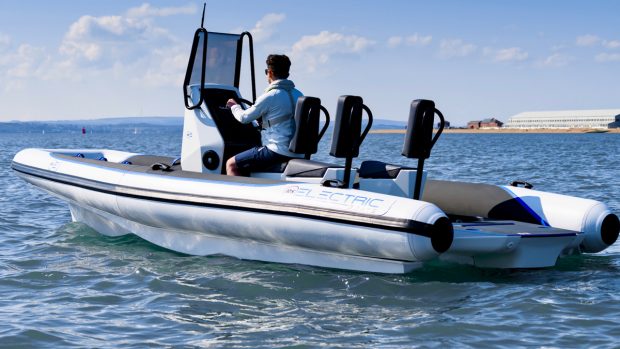One method of reducing the cost of buying and running a boat is shared ownership. It can work very well, or it can be disastrous.
Shared ownership
One method of reducing the cost of buying and running a boat is shared ownership. It can work very well, or it can be disastrous.
It is a good idea for the owners to share the same purpose in running the boat, and similar interests, as well as to be generally compatible and tolerant of each others’ habits and fancies.
Where serious difficulties most often occur is when a relationship between co-owners breaks down, for whatever reason. There have been cases where one partner has tried to get out of a syndicate, and been unable to do so without losing his or her share of the boat.
A recommended approach is that co-owners should sign the standard form ‘Agreement For The Syndicate Ownership Of A Yacht’ which the Royal Yachting Association produce for their members. The purpose of this is not so much to regulate the day-to-day running of the boat, but to give owners a satisfactory system for dismantling a syndicate.
Another way of reducing the cost of buying and running a boat is to join one of the commercial syndicates which sell shares in craft they manage.
But before handing over any money, check out the company in question, perhaps by making a company search (as with any boatbuilder or dealer whose financial status is not known). And ask whether you can contact shareholders, to quiz them about their experiences of this kind of boat ownership.
Specifying options & extras
Even if you are buying a standard production motor cruiser, you are likely to have a number of choices over how it is fitted out.
Engines
For a start most boats are offered with several engine options. In some mid-size boats, between about 26ft (8m) and 36ft (11m), the variety can be bewildering: single and twin installations, diesel and petrol, and a variety of different horsepowers and configurations.
Your choice may depend largely on the depth of your pocket, though obviously the importance you attach to speed will be a factor, as will any preference for diesel or petrol.
The relative merits of diesel are reliability, safety and cheaper fuel. Those of petrol are better power-to-weight ratio, quieter running and cheaper initial purchase price.
It takes 10 years or more of average cruising to spend, in extra running costs, the money saved by buying a petrol engine rather than a diesel of equivalent power. On the other hand, the secondhand value of a diesel boat will be greater, so you will recoup at least some of the extra money you spend when you come to sell.
Layout
Some boats also have alternative interior layouts, such as a second or third cabin instead of an open dinette. What you choose will probably depend on who, and how many, are your regular crew.
Most builders offer options in interior, and less commonly exterior, colour schemes. It might just be the soft furnishings and curtains that can be selected, or the choice could extend to interior joinery, linings and carpets, and exterior upholstery. Many yards are also amenable to any minor alterations in fixtures and fittings you might request, for example to the saloon furniture arrangements or galley equipment.
Obviously, interior decor options will depend on your taste, but bear in mind the effect they are going to have on the secondhand value of the boat. It is wise to stick to mainstream selections, and avoid anything that is particularly fashionable: the more in vogue it is today, perhaps, the more out of vogue it will be tomorrow.
The days of the truly one-off motor cruiser are long gone, but you can still have one custom-built from a standard GRP or steel hull and superstructure. If you have strong views on layout, and you think you can do a better job than the designers of production boats, then this might be the best route to boat ownership.
Planning the layout can be fun, but it takes time, and a lot of discussion with the builders. Again, be wary of creating something too unusual to be saleable when you want to move on to another boat.
Inventory
The list of equipment included in a boat’s quoted standard price can vary. Some builders’ inventories are impressive, including all the essential safety gear, navigation aids, ropes and fenders, even deck brushes and buckets. In other cases, items which you consider vital may be optional extras.
Many buyers like to choose their own equipment, at least in the area of navigation aids, and builders will generally fit whatever is requested.
It might be cheaper to get electronic items such as radar and GPS fitted after delivery by an electronics dealership, but there are advantages in getting the builders to install them: by doing so at fit-out stage, they should be able to make the neatest job of it, and in theory you will be sorting out any teething troubles with just one company.
Do…
1) check out the builders’ and/or dealers’ reputation and facilities for after-sales service;
2) deal with a member of the British Marine Industries Federation;
3) get every agreement in writing;
4) ensure any stage payments are secure, perhaps via an escrow account or a bank guarantee;
5) insist on an acceptance trial;
6) obtain, and keep, a Bill of Sale and receipted VAT invoice.
Don’t…
1) rely on verbal agreements;
2) pay more as a deposit than you have to;
3) pay your final instalment until you have accepted the boat, unless you are in absolutley no doubt about builders’ honesty and viability;
4) overlook routine discounts if doing a part-exchange deal;
5) choose layouts or furnishings that are too way-out, or too way-in!









